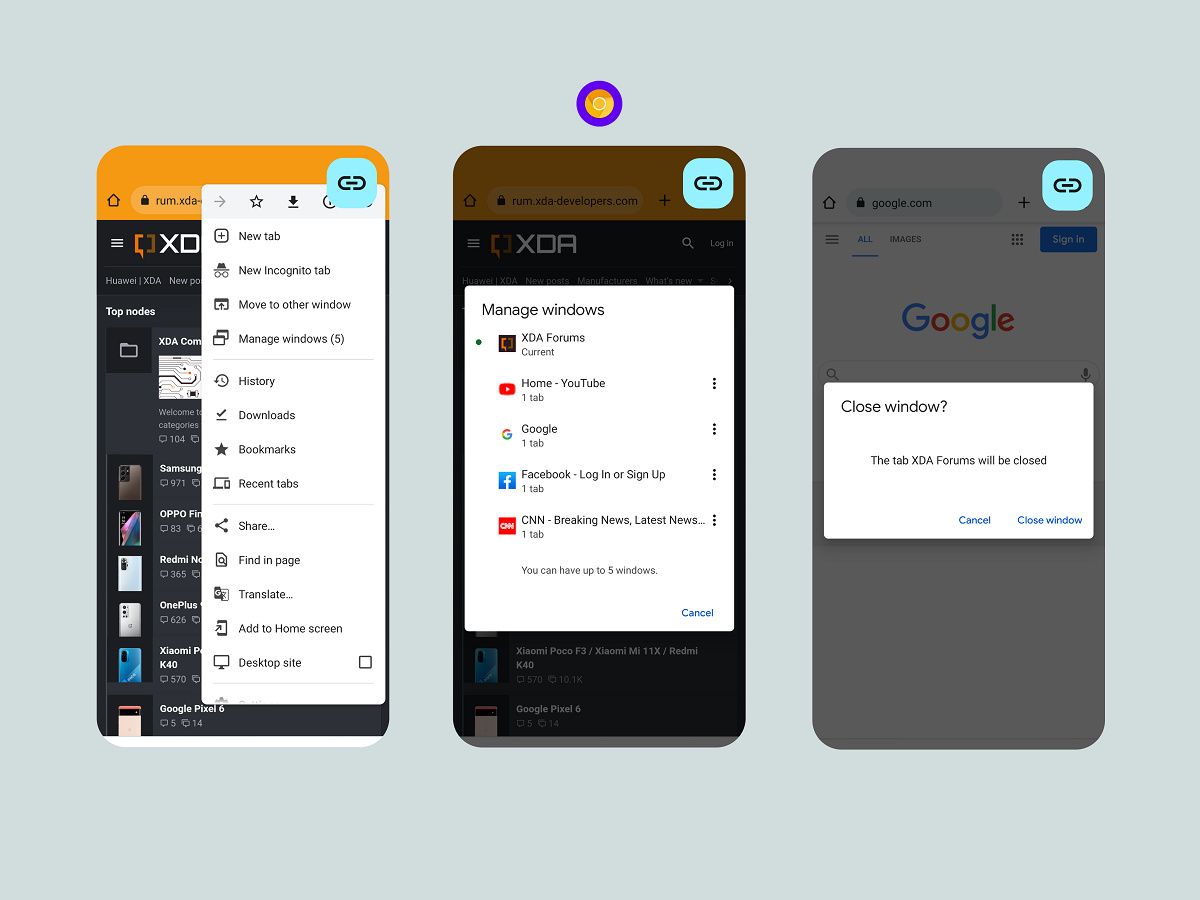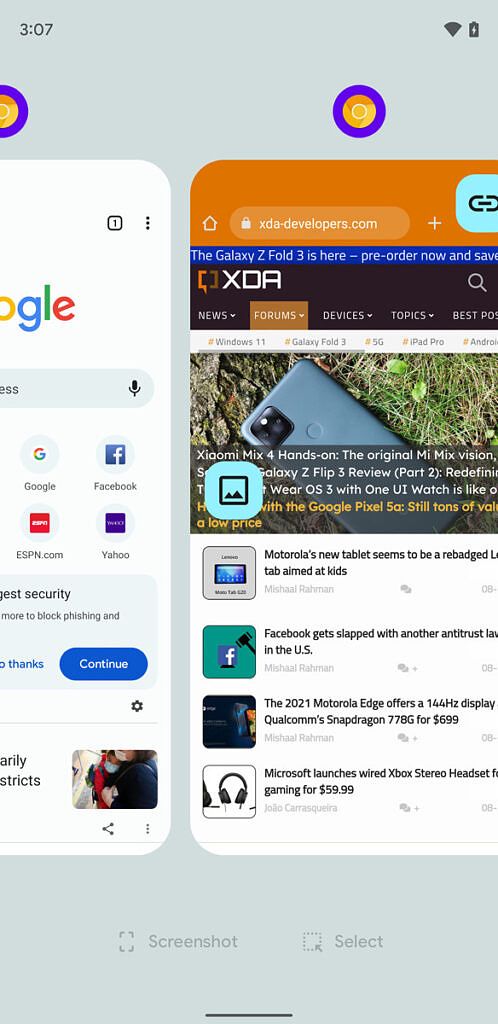Chrome tabs can be organized in different ways depending on the platform. On desktop, you can put tabs into groups within one or more windows which you can then rearrange using your OS's window manager. On Android, you can also put tabs into groups, but you can't open multiple instances of Chrome like you can on desktop. That's set to change with the upcoming Android 12 update and a new version of Google Chrome, however, as Google is working on bringing multi-instance support and a window manager to Chrome for Android.
In the past few weeks, multiple code changes tagged "multi-instance" were submitted to the Chromium Gerrit. These code changes add a "new window" button to the context menu of Google Chrome whenever the device enters split-screen mode. Tapping on "new window" opens a new instance of Chrome in the other half of the screen. Once a second Chrome instance is open, the context menu is updated with a "manage windows" button that lists all active windows, which window is in focus, the title of the active tab in each window, and how many tabs are open in each window. You can open up to 5 windows in total, though there's no limit to how many tabs can be opened within each window. Finally, the state of each instance is stored in the SharedPreferences of Google Chrome, allowing windows to persist through a reboot.
Since each Google Chrome window is a new instance of Chrome, that means each window appears as a separate listing in the recent apps overview. Long-term users of Android may remember that Android 5.0 Lollipop mixed Chrome tabs with apps in the recent apps overview, but this feature was removed with the release of Android 6.0 Marshmallow. For those of you who loved that old tab management system, Google Chrome's new multi-window support on Android 12 will be a welcome addition.
Earlier today, a code change enabling the instance switcher flag by default for devices running Android 12 was merged to the Chromium Gerrit. The code change adding the actual feature flag was initially merged in late June, though, and the flag can be found in Chrome 93 or later. If you're interested in trying out the feature right now on your Android 12 device, you need to have Chrome Beta, Dev, or Canary installed and the instance-switcher flag enabled. Otherwise, you'll need to wait for a future Chrome release that will have the instance switcher flag enabled by default.
If your device doesn't run Android 12 and you want to open two Chrome windows side-by-side, there is a way to do it. Open Chrome, navigate to any website, launch Chrome in split-screen mode, open the context menu, and select "move to other window." This opens a new instance of Chrome, though it should be noted you can't open any additional windows and all tabs are merged into a single window when you exit split-screen mode.


